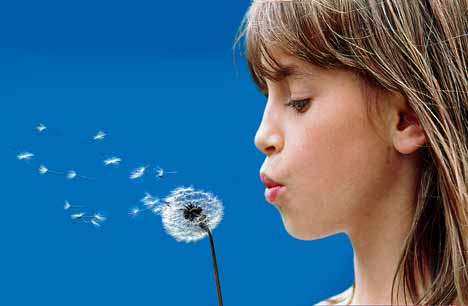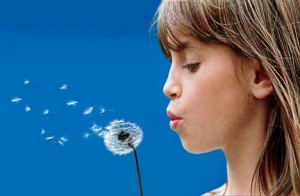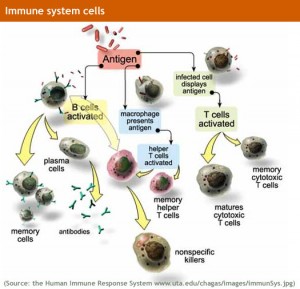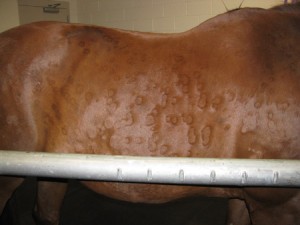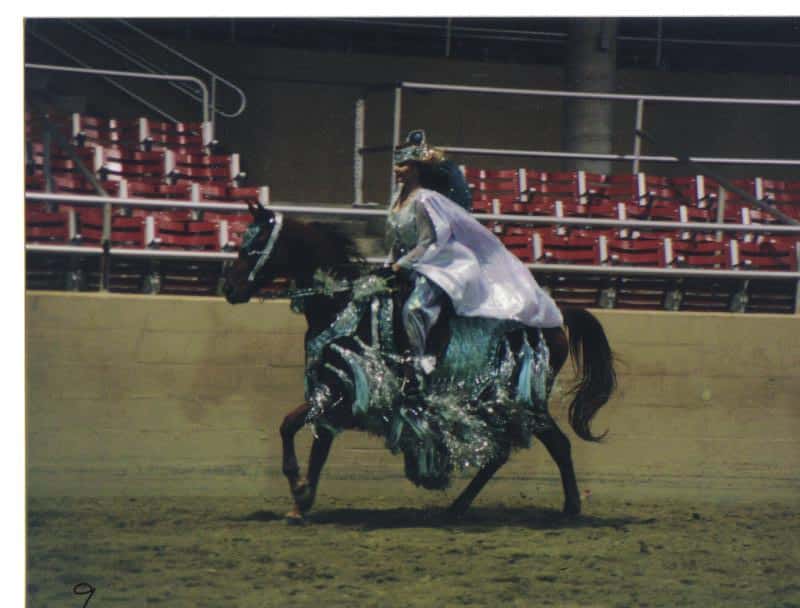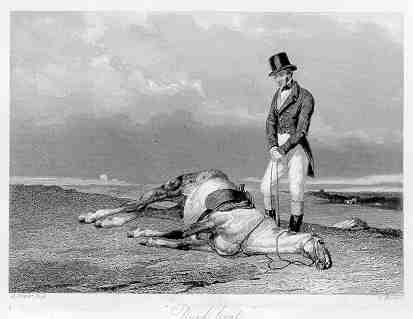I hope that you’re not allergic to anything.
I hope you don’t sneeze when it’s pollen season. I hope your skin doesn’t itch when you touch a cat. Allergies are miserable. You can’t cure them, either. That’s why the drugstores aisles are full of medications that can help control the symptoms; nobody can fix the problem.
NOTE: Remember that – keep saying that. You can’t cure allergies. No one can cure allergies. No product cures allergies. It’s too bad. Awful, really.
And horses have them, too.
Fundamentally, allergies are an over-reaction of the horse’s immune system (and it’s never a good idea to overreact to anything). The immune system is made up of a network of cells, tissues, and organs that work together to protect the horse’s body. Every horse – every mammal, every creature – has an immune system. A properly functioning immune system is the biological warfare unit for the horse’s body. The immune system normally protects your horse’s body against harmful substances: substances such as bacteria and viruses and toxins and parasites. While the basic function of the immune system is reasonably simple to understand, when it gets down to the nuts and bolts of how the system works (which we’re not going to do), the immune system is complex, intricate, and really interesting.
The horse’s immune system normally recognizes and reacts to foreign substances called allergens. Most immunologists (people who study the immune system) think that the allergens are always some sort of a protein.
ASIDE ABOUT AN ALLERGEN: Allergens are harmless to most individuals; in some ways, allergens can even be pretty wonderful. I mean, really. Think of pollen. Pollen is a common allergen. What could be a nicer concept – in theory, anyway – than the fertilizing grains that make flowers? Who, exactly, is against flowers? But if you have hay fever, you probably also hate pollen, and understandably so. That said, your red, watery eyes are not the pollen’s fault – it’s your immune system’s fault.
In most horses, the common allergens don’t cause any problems. But in a horse with allergies, the immune system overreacts and treats something fairly harmless, like an insect bite, as something really dangerous to his body.
Here’s a list of common horse allergens:
- Insects (several) – Look: Here’s an illustration of a no-see-um!*
- Pollen from weeds, gardens and trees
- Grooming Sprays
- Shampoos
- Synthetic materials (e.g., the Neoprene® material from which some boots and pads may be made). These sorts of things usually cause contact allergies with the skin, where the allergic reaction occurs at the spot where the material contacts the horse.
- Dust and molds
- Medications or Supplements
- Chemicals such as crop sprays
- Stall bedding materials
IMPORTANT NOTE: The problem with common allergens is that they are everywhere. The real “cure” for allergies would be to avoid them, but how are you going to keep your horse away from dust if he lives in a stable, or keep him away from insects if he’s, well, anywhere?
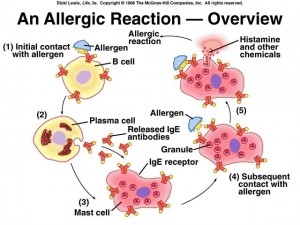 When the immune system of an allergic horse recognizes an otherwise innocuous substance as harmful, it does many things. One of those things is to release chemicals to fight off the allergen. One of the most well known of those chemicals is called histamine (more on that in a bit). The allergic horse’s immune system attacks the substance with a ferocity far greater than required. This all-out attack by a whole bunch of bioactive chemicals is what causes the clinical signs of an allergy.
When the immune system of an allergic horse recognizes an otherwise innocuous substance as harmful, it does many things. One of those things is to release chemicals to fight off the allergen. One of the most well known of those chemicals is called histamine (more on that in a bit). The allergic horse’s immune system attacks the substance with a ferocity far greater than required. This all-out attack by a whole bunch of bioactive chemicals is what causes the clinical signs of an allergy.
So what are the most common signs of allergies in horses?
1. They itch, and lose hair. Itching and hair loss is often blamed on biting insects; horses will have an allergic reaction to the protein that’s in the inset saliva. The insects have lots of colorful names: midges, no-see-ums, sand flies or punkies. Itching is such a common problem in horses with allergies that even the itching has lots of names. Summer Itch, Sweet Itch, Hot Spots, Summer Seasonal Recurrent Dermatitis, Allergic Dermatitis, and Queensland Itch are all various terms to describe horses that scratch and scratch and scratch until there’s very little left of hair or hide.
2. They break out in bumps. Most people call those bumps, “Hives.” A horse with hives is a curious-looking animal. It’s as if he’s got little blisters all over his body. Those blisters are as a result of blood vessel inflammation; when the vessels get inflamed, as a result of an interaction with the protein-allergen, fluid leaks out in little pockets. Hives usually aren’t serious, but they sure look alarming (trust me, I know, I’ve fielded lots of emergency calls about them)!
3. They have breathing problems. Very occasionally will have an acute, severe allergic reaction to something like a vaccine, or insect bite. This type of allergic reaction, called an anaphylactic reaction. A horse having an anaphylactic reaction may have white froth pouring out of the nostrils, sweat profusely, breath rapidly, have an elevated heart rate, and be in obvious distress. This is a veterinary emergency, but fortunately, it’s very rare.
The breathing problem more commonly in horses is a condition almost everyone calls heaves.** It’s been well demonstrated that the inflammatory response that occurs in the lungs of horses with heaves is in response to an allergen. Heaves is a condition that’s seem more commonly where conditions are wet or moldy – it’s not a commonly diagnosed condition in southern California (or, presumably, in Saudi Arabia).*** It’s a big problem in much of the horse world, however.
HOW TO FIX ALLERGIES (A MEDICAL TRUISM): If you remove the cause of a disease, the disease usually goes away.
Honestly, that truism is not something that you should need four years of veterinary school to understand. The problem with allergies, of course, is that you often can’t figure out what the cause of the problem is, because, for the horse, they are everywhere. Nevertheless, there are three approaches that people usually take when they are worried that there horse has allergies.
1. Elimination – You can do this one on your own. Basically, what people try to do is stop exposing the horse to potential allergens. Of course, that’s a lot easier said than done. For example, if your horse were allergic to giraffes, it really wouldn’t be a big deal to keep giraffes out of his environment. But it’s a much different kettle of fish if your horse is allergic to, say, dust, or small biting flies; horses and dust, or horses and flies seem to go together like, salt and pepper, or peanut butter and jelly, or a shovel and pail (you get the idea). So, trying to eliminate the problem is a great idea, but it can be almost impossible to eliminate the cause of the horse’s allergy from his environment.
A QUICK NOTE ABOUT ALFALFA HAY: It seems like many people are worried that their horses are allergic to alfalfa hay, and it’s one of the first things to go when people start trying to eliminate unknown allergens from their horse’s diet. In fact, food allergy is an uncommon and poorly understood disease in horses. It is possible for a horse to have an adverse reaction to a food, such as alfalfa, without it being a true allergic reaction, but the treatment is the same, either way. And it’s not just alfalfa; dietary items reported to cause adverse food reactions in horses include alfalfa, barley, beet pulp, bran, buckwheat, chicory, clover, malt, oats, potatoes, wort, wheat, feed additives, and feed supplements. It’s always something. CLICK HERE to read a nice article on food reactions in horses.
2. Find out what the problem is – Some folks will expend considerable amount of time and money to try to figure out what the horse is allergic to, understandably figuring that if they know what “it” is, “it” can be eliminated. There are two ways to do this: serum testing and skin testing. The tests have two things in common: 1) They are fairly expensive, and 2) They don’t seem to work all that well.
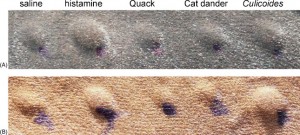
Skin test responses in horses. Only the one on the bottom right is considered significant; you can see that some interpretation is required.
Skin testing seems to be the more accurate of the two approaches. With skin testing, small amounts of allergens are injected into the skin and the reaction is measured at intervals from 30 minutes to 48 hours. Swelling at the site of injection indicates a positive result. The time at which the reaction is first noticed gives an indication of the type of hypersensitivity that is involved.
Serum testing is the easier of the two approaches, which is also probably the reason why it’s more popular. Your veterinarian draws blood, sends it to the lab, and, voilà, you get a list of things that your horse is supposed to be allergic to. That’s great – the problem is that they have been shown to be fairly innaccurate (CLICK HERE to see the study). In my mind, ease of operation is not a good reason to do an expensive test with results that don’t mean much of anything.
3. Control the problem – There are some things that you can do that will help, don’t cost a lot, and don’t require much effort. For example, you can improve ventilation in your horse’s environment to control dust. You can put on fly sheets or body suits to protect him from insects. Fly control systems are available to install in barns. These sort of simple steps can really help keep your horse’s allergy signs under control.
Even if you can’t find out what’s causing your horse’s allergy problem, you can usually control it using one of two drugs. The most effective of those are corticosteroids; anti-histamines are also often prescribed. Corticosteroid drugs (e.g., dexamethasone) generally work great, but many people seem to have an unreasonable fear of them, and are overly concerned about side effects (CLICK HERE to read my thoughts on side effects). Anti-histamines seem not to work as well, probably because they are given after histamine has already been released; after the allergic horse has already left the barn, as it were. Your veterinarian can give you advice on dosage, and dose frequency: the anti-histamine hydroxyzine has been particularly advocated for some horses (and it’s pretty cheap). There are also some reports of allergies being helped by feeding 1 pound of soaked flax seed a day. Oh, and some people have reported some success giving 1/4 cup of ground flax seed every day, too, which, if nothing else, saves soaking.
Based on results of skin or serum testing, it is also possible to generate treatment serums for desensitization. These have to be given frequently, and for a long time – which is a real pain, unless you’re very dedicated. Even if you are dedicated, there’s limited evidence that they work. Honestly, I’ve stopped recommending treatment serums because the results that I’ve seen have been so dismal but that’s just my experience.
As with human allergy patients, there have been efforts made to desensitize horses. For example, the veterinary school at University of California, Davis has reported good results with allergen-specific immunotherapy. I’ve only had the opportunity to try on one horse (it didn’t help) but that doesn’t mean you shouldn’t consider it for your horse, particularly if he’s had a problem that you can’t get under control.
The good news is that allergies tend to be seasonal. In southern California, that means that the flies will eventually go away, the rains will eventually come, and the dust will eventually die down. The allergies will usually go away, at least for a time.****
Allergies are a pain, for you and for your horse. Fortunately, you can usually control the signs of horse allergies, even if you can’t make them go away for good. It’s worth the effort to make your good buddy more comfortable – I’m sure he’d do the same for you.
***********************************************************************************************************
* OK, here’s a real picture of a no see um. 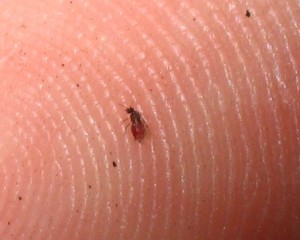
** The current veterinary term for heaves is Recurrent Airway Obstruction, or RAO; it used to be called Chronic Obstructive Pulmonary Disease, or COPD. It’s apparently important that the names of things changes with some regularity in veterinary medicine, so as to make sure that everyone gets to learn something new and different from time to time. It is always important that the diseases have acronyms.
*** CLICK HERE to see a nice article from the University of KY Cooperative Extension Service about heaves.
**** If, however, you are giving your horse something to treat his allergies when they go away anyway, rightly or wrongly, the treatment will get the credit.

